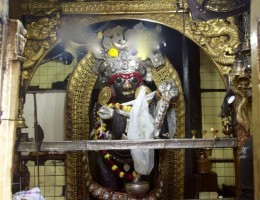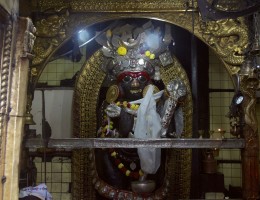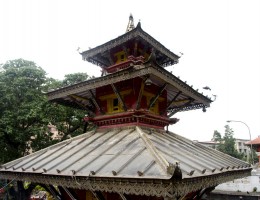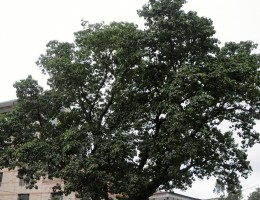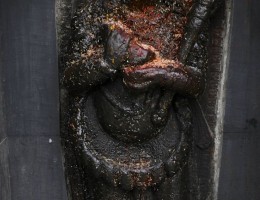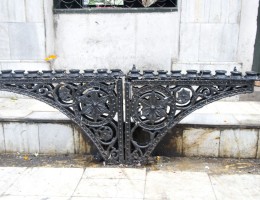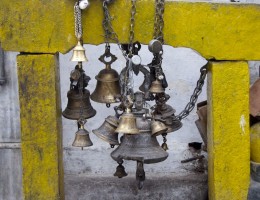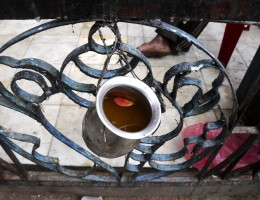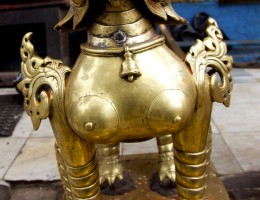काठमाडौं, टुँडिखेलको पश्चिमतिरको कम्पाउन्डछेउ महाकालको मन्दिर छ । पश्चिमतिर फर्किएको यो मन्दिर मिलिटरी अस्पतालअगाडि पश्चिम फर्किएको अवस्थामा छ । बाटाको किनारामै रहेको यस मन्दिरमा तीन तहको धातुको छाना छ । मन्दिरभित्र कालो रंगको डरलाग्दो महाकालको प्रस्तर मूर्ति छ । कालो प्रस्तरमा निर्मित मूर्तिका कान र नाक लगायतका अंगहरू धातुका पाताले मोरिएका छन् । नरमुण्डमाला लगाएको र शवमाथि उभिएको महाकालको मूर्तिले मुख बाइरहेको देखिन्छ । महाकालको स्थापना मध्यकालतिर भएको मानिन्छ । यो मन्दिर कलिगत संवत् ३८२२ मा गुणकामदेवले स्थापना गरेको विवरण वंशावलीहरूमा उल्लेख छ । तर यो संवत् के हो भन्ने कुरा स्पष्ट छैन । महाकालको स्थापनासम्बन्धी एउटा किंवदन्ती प्रचलित छ । त्यस अनुसार, एक पटक महाकाल आकाशमार्गबाट चीनतिर जाँदै गरेको एक जना तान्त्रिक गुभाजुले थाहा पाएछन् । टुँडिखेलतिर बाख्रा चराइरहेका ती गुभाजुले यिनलाई नेपालमै राख्ने विचार गरी राजालाई बोलाएछन् । त्यसपछि महाकालको एउटा भव्य मूर्ति बनाई उनलाई यहीं बसी देशको रक्षा गर्न तान्त्रिक विधिले आग्रह गरेछन् । तर महाकालले भने आपूm ब्रह्माण्डभर घुमिरहनुपर्ने हुँदा यहाँ सधैं बसिरहन नसक्ने, शनिबार मात्र यहाँ बसी नेपालको सुरक्षा गर्ने बताएछन् । यसरी महाकालले वचन दिएकाले प्रत्येक शनिबार महाकालको दर्शन र पूजनमा श्रद्धालुहरूको भीड लाग्ने गरेको हो भनिन्छ ।
The three-storeyed temple of Mahakal lies West of Tundikhel in Kathmandu, and houses a terrifying idol of the deity. The idol is made of fine black stone and depicts the deity wearing a garland of human skulls and standing on a dead body with his mouth open, while the nose and ears are covered with metal leaflets. The temple is said to have been established in the year 3822 of the Kaligata Samvat. This date, however, is unclear and not universally accepted. According to legend, the temple was founded by a Tantric Guvaju. Upon witnessing Mahakal flying across the sky towards China he is believed to have called upon the King of Kantipur, where upon the two of them decided to build an idol so as to persuade Mahankal to stay here permanently. However, Mahakal refused the request but agreed to visit the temple every Saturday. Thus, thousands of people visit the temple on Saturdays as it is believed that the deity himself is present there then.

